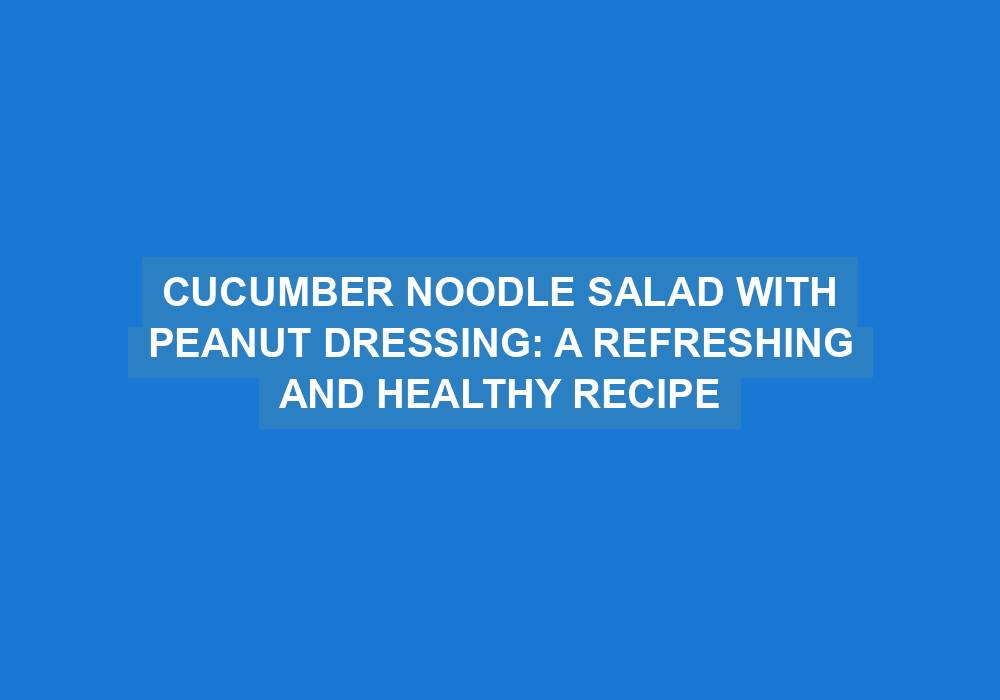Quick Answer
Raspberry Balsamic Glazed Chicken is a light and fruity dish that combines the tanginess of balsamic vinegar with the sweetness of raspberry preserves. This recipe offers a flavorful and healthy option for cooking chicken, with variations and substitutions available for different fruit preserves. With positive reviews and easy-to-follow directions, this dish is sure to impress both family and guests.
Introduction:
Raspberry Balsamic Glazed Chicken is a delightful and flavorful dish that combines the sweetness of raspberry preserves with the tanginess of balsamic vinegar. This light and fruity chicken recipe offers a perfect balance between sweet and savory flavors, making it an excellent choice for any occasion.
Whether you’re looking to impress your guests at a dinner party or simply want to enjoy a delicious meal at home, this Raspberry Balsamic Glazed Chicken recipe will not disappoint. The combination of tender chicken breasts coated in a luscious glaze creates an irresistible taste sensation that will leave everyone wanting more.
In this blog post, we’ll explore different variations of the Raspberry Balsamic Glazed Chicken recipe from various external sources. We’ll provide detailed instructions on how to prepare this mouthwatering dish step by step so that even novice cooks can easily recreate it in their own kitchens.
So let’s dive into the world of culinary delight as we discover all there is to know about preparing Raspberry Balsamic Glazed Chicken!
Raspberry Balsamic Glazed Chicken
Raspberry Balsamic Glazed Chicken is a delicious and flavorful dish that combines the sweetness of raspberry preserves with the tanginess of balsamic vinegar. This unique combination creates a glaze that perfectly complements tender chicken breasts, resulting in a mouthwatering meal.
The glaze adds depth and complexity to the chicken, balancing out its natural flavors while adding an irresistible touch of sweetness. The raspberries provide fruity notes, while the balsamic vinegar lends acidity and richness to create a well-rounded taste experience.
This recipe offers a delightful twist on traditional glazed chicken dishes by incorporating these unexpected ingredients. It’s perfect for those who enjoy experimenting with different flavor combinations or are looking for something new to add excitement to their dinner table.
Whether you’re hosting guests or simply want to elevate your weeknight meals, Raspberry Balsamic Glazed Chicken is sure to impress everyone at your table. Its vibrant colors make it visually appealing as well – making it ideal for special occasions or when you want an eye-catching presentation without compromising on taste.
Intrigued? Let’s dive into this delectable recipe!
Recipe Overview
Raspberry Balsamic Glazed Chicken is a delightful and flavorful dish that combines the sweetness of raspberry preserves with the tanginess of balsamic vinegar. This recipe offers a perfect balance between fruity and savory flavors, making it an excellent choice for those who enjoy unique taste combinations.
The chicken breasts are cooked to perfection in a skillet along with sautéed onions, which adds depth and richness to the overall flavor profile. The glaze is made by combining raspberry preserves, balsamic vinegar, and black pepper – creating a luscious sauce that perfectly complements the tender chicken.
Not only does this recipe provide an explosion of flavors on your palate but it also presents beautifully when served. The vibrant red color from the raspberries creates an eye-catching presentation that will impress both family members at home or guests at dinner parties.
Whether you’re looking for something different to add variety to your weekly meal plan or want to surprise loved ones with a special homemade dinner, Raspberry Balsamic Glazed Chicken is sure to be a hit!
Ingredients
To make this delicious Raspberry Balsamic Glazed Chicken, you will need the following ingredients:
- Vegetable oil
- Red onion
- Thyme
- Salt
- Boneless skinless chicken breasts
(Note: You can adjust the quantity based on your serving size)
For the glaze:
- Seedless raspberry preserves
(Alternatively, you can use apricot, blackberry or peach preserves as well) - Balsamic vinegar
Additional seasoning:
- Black pepper
These simple and readily available ingredients come together to create a flavorful dish that combines sweet and tangy flavors with succulent chicken.
Directions:
- In a large skillet, heat vegetable oil over medium-high heat. Add the red onion and sauté until softened.
- Season the chicken breasts with thyme and salt on both sides.
- Push the onions to one side of the skillet and add the seasoned chicken breasts to cook for about 6-8 minutes per side or until cooked through.
- While the chicken is cooking, prepare your glaze by combining raspberry preserves, balsamic vinegar, and black pepper in a small bowl or saucepan.
- Once cooked through, remove the chicken from the skillet onto a plate temporarily while you make your glaze.
- Spoon half of this delicious Raspberry Balsamic Glazed Chicken mixture into another pan if desired (or keep it all together) then return each piece back into its respective pot; coat evenly before serving hot alongside some steamed vegetables like broccoli florets drizzled lightly with olive oil & sprinkling sea salt flakes atop them – enjoy!
- Serve immediately by spooning generous amounts of raspberry balsamic glaze over each piece of juicy grilled poultry breast meat that’s been resting comfortably inside their pots since they were done being seared off earlier today at lunchtime when everyone was hungry enough not only because these dishes are so tasty but also due largely thanks again mainly towards how healthy such meals can be too!
Variations and Substitutions
While the classic Raspberry Balsamic Glazed Chicken recipe is delicious on its own, there are several variations and substitutions you can try to customize this dish to your taste. Here are a few ideas:
Fruit Preserves
Instead of using raspberry preserves, experiment with other fruit flavors such as apricot, blackberry, or peach. Each preserve will bring its unique sweetness and tanginess to the glaze.
Vinegar Options
If balsamic vinegar isn’t your favorite or if you want to switch things up, consider using red wine vinegar or apple cider vinegar instead. These alternatives will add their distinct flavor profiles while still complementing the fruity glaze.
Additional Ingredients
Feel free to get creative by adding extra ingredients that pair well with chicken and raspberries! Some popular choices include minced garlic for added depth of flavor or a pinch of cayenne pepper for some heat.
Grilling Option
If you prefer grilled chicken over stovetop cooking methods like sautéing in a skillet, you can adapt this recipe accordingly. After seasoning the chicken breasts with thyme, salt, and oil, you can grill them until cooked through. Then prepare the sauce separately by combining raspberry preserves, balsamic vinegar, and black pepper. Once done grilling, the chicken breasts should be brushed generously with the prepared sauce. Serve any remaining sauce alongside grilled chicken breast halves.
Remember that these variations allow you to tailor the dish according to personal preferences. So don’t hesitate to explore different combinations until finding one that suits your palate perfectly!
Whether it’s experimenting with alternative fruit preserves, vinegars, or additional ingredients, this versatile recipe allows for endless possibilities. Enjoy getting creative in making this Raspberry Balsamic Glazed Chicken truly yours!
Serving Suggestions
When it comes to serving Raspberry Balsamic Glazed Chicken, there are plenty of options that can complement the flavors and enhance your dining experience. Here are a few suggestions:
1. Side Dish Pairings:
- Roasted Vegetables: Serve the chicken with a side of roasted vegetables such as carrots, Brussels sprouts, or sweet potatoes for added color and texture.
- Quinoa Salad: Prepare a refreshing quinoa salad with ingredients like cucumber, cherry tomatoes, feta cheese crumbles, and fresh herbs. The lightness of the salad will balance out the richness of the glazed chicken.
- Garlic Mashed Potatoes: Creamy mashed potatoes seasoned with garlic make an excellent accompaniment to this dish.
2. Garnish Ideas:
- Fresh Herbs: Sprinkle some chopped fresh basil or parsley over each plate before serving for an extra burst of freshness.
Nutritional Information
When it comes to maintaining a healthy lifestyle, being aware of the nutritional content in our meals is essential. Here’s an overview of the nutritional information for Raspberry Balsamic Glazed Chicken:
Calories
The calorie count per serving is relatively low, making this dish a great option for those watching their caloric intake.
Fat
Raspberry Balsamic Glazed Chicken contains a moderate amount of fat. However, most fats come from healthier sources like vegetable oil rather than saturated or trans fats.
Protein
Chicken breasts are known for their high protein content, which helps promote muscle growth and repair.
Carbohydrates
While there may be some carbohydrates present due to ingredients such as raspberry preserves, they should not significantly impact blood sugar levels when consumed in moderation.
Fiber
Fiber content can vary depending on individual ingredient choices but generally remains minimal in this recipe.
Cholesterol
As with any poultry-based dish that includes skinless chicken breasts instead of dark meat cuts, the cholesterol level tends to be lower compared to other meats.
It’s important to note that these values may slightly differ based on specific brands used or personal modifications made while preparing the meal. If you have dietary restrictions or concerns about certain nutrients’ quantities within your diet plan, it would always be best to consult with a healthcare professional or registered dietitian for personalized advice.
Reviews and Feedback
When it comes to trying out new recipes, hearing what others have to say can be incredibly helpful. The Raspberry Balsamic Glazed Chicken recipe has received positive reviews from those who have tried it.
One reviewer on Food.com mentioned that they loved the combination of flavors in this dish. They particularly enjoyed how the sweetness of the raspberry preserves balanced perfectly with the tanginess of balsamic vinegar. Another user suggested adding a touch of garlic for an extra kick.
Over at MyRecipes, users gave this recipe a perfect 5-star rating! Many praised its simplicity and delicious taste. One person even commented that their family couldn’t get enough of it and requested them to make it again soon.
The versatility was also appreciated by reviewers as some experimented with different fruit preserves such as apricot or blackberry instead of raspberry, resulting in equally delightful outcomes.
Overall, feedback suggests that this Raspberry Balsamic Glazed Chicken is a winner among home cooks looking for something flavorful yet easy-to-make for dinner time.















